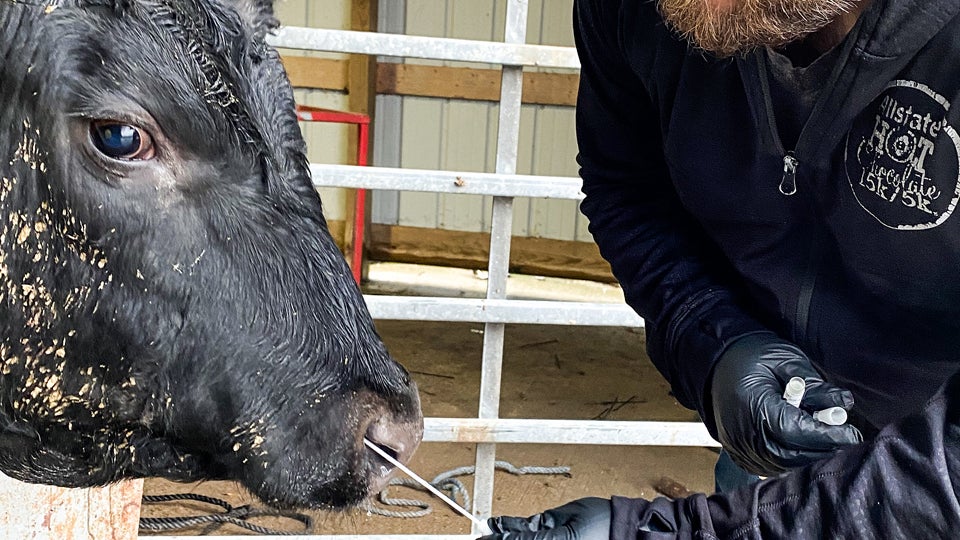Purdue gets $1M to develop cattle disease technology
WEST LAFAYETTE, Ind. (Inside INdiana Business) – Purdue University researchers are developing technology to reduce diagnosis time for bovine respiratory disease. The work, led by agricultural and biological engineering professor Mohit Verma, is being funded by a $1 million grant from the USDA’s National Institute of Food and Agriculture Inter-Disciplinary Engagement in Animal Systems grant.
Purdue says the disease, which is one of the most prevalent and costly illnesses in the beef and dairy industries, accounts for about half of all feedlot deaths in North America and costs producers as much as $900 million a year.
“Bovine respiratory disease can be triggered by a number of bacteria and viruses, making treatment decisions difficult. By the time a test comes back in four or five days, the disease may have killed the calf or spread to many others in the feedlot,” said Verma. “Over the next three years, we will develop a test that addresses the bacterial side and have a prototype to use in the field.”
Purdue says current tests don’t offer results for four or more days while the new test can diagnose the disease within about 30 minutes. The university says quickly diagnosing the disease could improve the well-being of animals and save producers money.
Jennifer Koziol, a clinical assistant professor in Purdue’s College of Veterinary Medicine and co-investigator on the project, says veterinarians currently treat BRD with antibiotics, but it’s possible the bacteria is resistant to the chosen antibiotic, making treatment ineffective.
“When we have BRD going through multiple animals in the herd, we need to know exactly what bacteria we are up against and exactly which antibiotics will be useful quicker than four to five days so we can make good choices about the antibiotics we use the first time,” said Koziol. “Having a rapid test that we can use is good for the animals and good for antibiotic stewardship.”
Verma believes the biosensor technology his team is developing could be the foundational technology for detecting other animal and human illnesses. Prior to receiving the grant, the university says Verma had started adapting the platform to identify the presence of SARS-CoV-2, the virus that causes COVID-19.
“To accurately diagnose a BRD infection, our sensors will need to be versatile enough to identify many bacteria and viruses,” said Verma. “It’s entirely possible we’ll be able to adapt these sensors rapidly to address other health issues, potentially even new viruses that require quick detection to prevent global pandemics.”
The research conducted to obtain the $1 million USDA-NIFA grant was funded by a startup Agricultural Science and Extension for Economic Development grant. Verma also received funding from the PI4D Indiana Disease Diagnostics Challenge.



